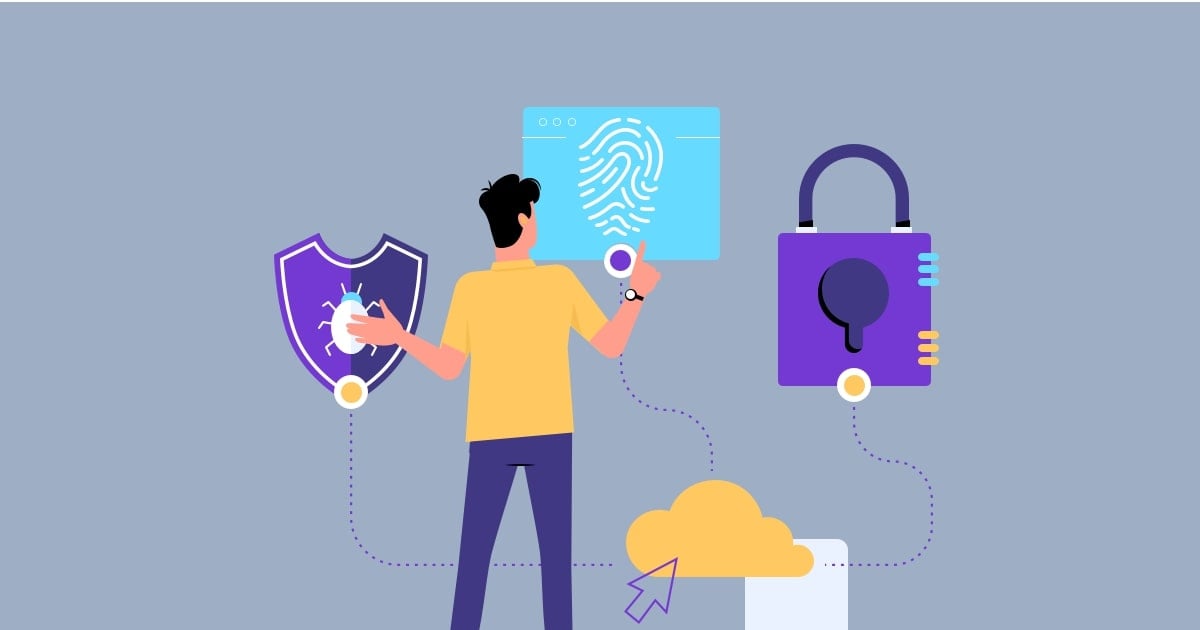While cybersecurity has been more critical than ever since we decided to move all our business operations online, there has perhaps been no greater reminder just how important it is to safeguard our sensitive data than the calamities we lived through in 2020. Bad actors scamming everyone they can, data thieves stealing intellectual property and identity thieves hard at work while the rest of the world has scrambled to adjust to drastically different working and living conditions.
It’s the cybersecurity professionals we can thank for guarding our crown jewels of information and protecting our organizations’ good name. It’s these folks who watch over the alphabet soup of ways we categorize personal information today. From our personally identifiable information (PII) and our personal health information (PHI)to our nonpublic personal information (NPI), cybersecurity professionals constantly provide the confidentiality, integrity and availability of information we need.
Do you trust your vendors to keep your data safe?
Just like we trust our doctors, lawyers and bankers on a daily basis, we trust our organization’s and customer’s data to the safe keeping of cybersecurity professional every single day. We trust them, but who do they trust? The truth is, cybersecurity professionals trust everyone… however, they also verify everything. Trust but verify isn’t just a cold war slogan; it’s a way of life for cyber pros. Their keen sense of awareness is critical to third-party risk management and protecting everyone’s data, which can be misused or accessed by unauthorized parties through so many outlets – including your vendors. Your private data can often be inadvertently exposed in a variety of different ways.
Here’s an example of how data can be touched by more vendors than you signed up for:
Third-party vendors took data from Facebook, and then their subservice providers, aka fourth-party vendors, had access to the same data set. Then, on top of that, another level of vendors (aka the fifth parties) performed analytics on the same data set. There was nothing to stop these actions by these companies at the time. That’s where your cybersecurity professional comes in to help manage vendor risk and verify the data isn’t being supplied to and viewed by the wrong people.
The Intersection of Cybersecurity and Third-Party Risk Management
There are two major ways cybersecurity professionals greatly assist third-party risk management. These include:
1. They champion data security and ongoing protection.
Cybersecurity teams work to not only protect your data, but to also make sure it lives where it should in a safe and secure manner. Today’s cybersecurity professional must follow the laws, regulations and guidelines issued by federal legislation, federal agencies, state laws and state agencies. Not an easy task by any means, especially when you realized all the cybersecurity effort is certainly necessary today and can all be undone by bringing the wrong vendor inside the gates. That’s why vigorous vendor management, data management and privacy concerns are an absolute must have today.
Think about this:
In 2019, the average small to medium-sized financial institution will stop over 500 million attempts to find out what’s behind their firewall. That’s over 1.3 million attempts to see inside our networks every day. Every third-party vendor you bring onto your network makes that number go up. Potentially way up. That’s a lot to monitor and secure!
2. They’re training and education advocates.
Virtually every employee in every organization should be educated and tested on the many, many ways bad actors will attempt to foil our security efforts and gain access to our corporate networks – this includes your vendors’ employees. The cybersecurity professional assists these efforts through sharing best practices on how to avoid clicking an email link, or opening an unexpected email, and letting strangers enter non-public areas of the organization. They put an extraordinary effort into making sure every employee is as safe as any human can be. We’re all human, after all, and we all make mistakes.
It only takes one employee in your organization, or at the vendor organization, clicking in the wrong place on the wrong email to send your cybersecurity team running down their “kill chain,” signaling the cybersecurity teams to initiate an aggressive search operation to locate the virus or malware.
Remember, there are a lot of elements to an effective third-party risk management program. The best programs have teams who communicate well across the organization. Cybersecurity professionals are one of those important elements. Next time you have an opportunity, say thank you to one of your cybersecurity team. That doesn’t happen often enough.
Do you have the right professionals in place for your third-party risk management process? Download the infographic to help.



















